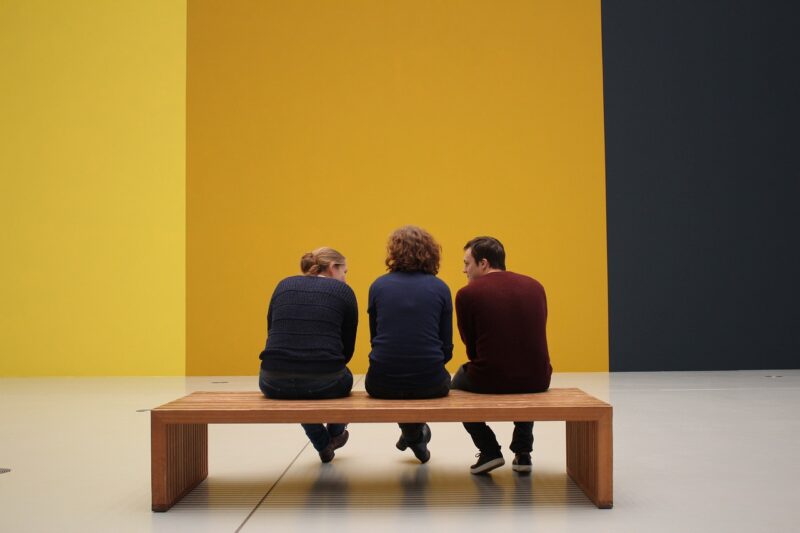
Museums are traditionally thought of as institutions that preserve the past and educate the present. However, some museums defy convention, offering collections that challenge our perceptions of art, culture, and history. In this article, we will embark on a journey to explore the world’s most unusual museums, each telling a unique story that reflects the quirks of human creativity and ingenuity.
1. The Museum of Bad Art, USA
Located in Dedham, Massachusetts, the Museum of Bad Art (MOBA) celebrates art that may not win any awards but holds a certain charm due to its imperfections. Founded in 1994 by Scott Wilson, MOBA aims to provide a platform for the humorous side of creativity, showcasing pieces that are deemed ‘bad’ by traditional art standards. The collection features paintings, sculptures, and other artworks that fail to meet the conventional scope of aesthetics.
A standout in the collection is a piece titled “The Boy in a Bubble,” which presents a child encased in a transparent sphere, painted in such a way that it evokes both laughter and confusion. The museum emphasizes that the piece is not only bad in execution but also invites viewers to ponder the deeper meanings of art, perception, and societal standards.
Visiting MOBA is a reminder that art is subjective; it’s not always about mastering technique but also about expressing oneself, even in flawed ways.
2. The Leila’s Hair Museum, USA
For those intrigued by the peculiar, the Leila’s Hair Museum in Independence, Missouri, offers an unforgettable experience. Displaying a collection of over 600 hair art pieces, this museum showcases rings, brooches, and intricate woven items made from human hair, embodying Victorian sentimentality.
Hair art was extremely popular in the 19th century, often serving as a symbol of love, remembrance, and memorialization. Leila, the founder, inherited her grandmother’s collection and turned her fascination with the macabre into an exhibit that both shocks and mesmerizes visitors. The museum features intricate designs, with pieces that tell stories of love lost, family bonds, and personal identity. Each strand of hair holds a memory, a connection to the past that can leave visitors both charmed and unsettled.
3. The International Cryptozoology Museum, USA
Located in Portland, Maine, the International Cryptozoology Museum is the first museum dedicated to the study of hidden or unknown animals. Founded by Loren Coleman in 2003, this unique institution explores the world of cryptozoology—an area that investigates creatures whose existence is not yet proven by mainstream science.
Exhibits feature everything from Bigfoot and the Loch Ness Monster to mermaids and the Jersey Devil. The museum houses original artwork, field research, and even a collection of casts made from alleged Bigfoot footprints. Visitors can engage in discussions about the possibility of these elusive creatures and ponder the mysteries that still exist in the natural world.
The museum encourages a sense of wonder and curiosity, reminding us that there is still so much left unexplored.
4. The Neon Museum, USA
In Las Vegas, Nevada, the Neon Museum shines a light on vintage signs and neon art that once graced the city’s landscape. Established in 1996, the museum is both a preservation site and an art exhibition, showcasing the iconic signs that tell the story of Las Vegas’s vibrant history.
The museum’s outdoor exhibition space, known as the Neon Boneyard, features various neon signs, including those from famous casinos and landmarks. Each sign is a piece of Las Vegas history; for example, the old Stardust sign reflects an era of glamorous entertainment. Visitors to the museum can explore how the city evolved through the styles of signage while enjoying a vivid display of color and light.
The Neon Museum not only celebrates the beauty of neon art but also sparks discussions about urban development, nostalgia, and the fleeting nature of fame.
5. The World’s Largest Toy Museum, USA
Nestled in Branson, Missouri, the World’s Largest Toy Museum features a staggering collection of over 1 million toys from different eras. Founded by Tom D. McKillip, this museum is a treasure trove of nostalgia for those who grew up with toys from the 20th century.
The museum includes everything from vintage dolls and action figures to classic board games and model trains. Each section of the museum exhibits toys by year, enabling visitors to travel back in time and relive their childhood memories.
One of the most astonishing exhibits features a collection of more than 1,500 different brands of Barbie dolls, showcasing the evolution of fashion and culture. The museum serves as a reminder of how toys reflect societal values and the passage of time, showing that play is a foundational aspect of our human experience.
6. The Spam Museum, USA
Located in Austin, Minnesota, the Spam Museum celebrates the storied history of Spam, the iconic canned meat product by Hormel Foods. This quirky museum features interactive exhibits, a gift shop, and an expansive collection detailing the product’s impact on American culture and cuisine.
Visitors can learn about the origins of Spam during World War II, its popularity in various global cuisines, and even sample different Spam recipes at the museum’s food tasting area. One of the standout exhibits highlights Spam’s presence in pop culture, featuring references in movies, TV shows, and art.
The Spam Museum is a testament to how food can shape cultural identity and offers a humorous take on how something seemingly mundane can become a beloved and iconic item.
7. The Salt and Pepper Shaker Museum, USA
In Gatlinburg, Tennessee, the Salt and Pepper Shaker Museum showcases an impressive collection of over 20,000 salt and pepper shakers from around the world. Founded in 2000 by H. David and Candy S. Wise, this unique museum illustrates how even the simplest objects can influence culture and art.
The museum’s exhibits reflect various themes, from pop culture to holiday celebrations, with shakers shaped like everything from animals to famous landmarks. Visitors can marvel at the creativity and craftsmanship behind each piece and discover the cultural significance behind these everyday objects.
In both humorous and educational ways, the Salt and Pepper Shaker Museum invites visitors to consider how ordinary items can encapsulate extraordinary stories.
Conclusion
Exploring the world’s most unusual museums reveals a rich tapestry of human experience, creativity, and storytelling. From the whimsical to the bizarre, these museums offer more than just collections; they present insights into our values, history, and societal quirks. Visiting these unconventional spaces sparks curiosity and imagination, showing us that history is not only preserved in traditional forms but also in the unfamiliar and unexpected. Should you find yourself on an adventure seeking the extraordinary, consider these unique museums—they’re sure to enrich your understanding of human culture and creativity.








